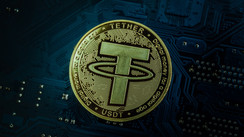Tether Announces Plans to Discontinue Bitcoin Omni Layer Version
The stablecoin issuer, Tether, has publicized its plans to terminate its Bitcoin Omni Layer version after witnessing waning interest from its user base. This particular version of Tether (USDT) began as one of the initial stablecoins ever introduced. The team's announcement, dated August 17, also confirmed the end of the Bitcoin Cash (BCH) and Kusama (KSM) versions.
No New Tether Tokens Going Forward
The announcement clarifies that moving forward, no additional Tether tokens will be issued on the Bitcoin Omni Layer, Kusama, or Bitcoin Cash. The team has made arrangements to maintain redemption for a minimum of a year, while promising more updates over the course of the year regarding the handling of redemptions after that stage.
The Bitcoin Omni Layer's Decline
The Bitcoin Omni Layer is a smart contract scheme developed atop the Bitcoin (BTC) blockchain. Originally dubbed “Mastercoin,” it launched way back in July 2013 - two whole years before Ethereum was even a concept. With Tether becoming the inaugural stablecoin to be launched on the system in October 2014, it swiftly escalated to the top-most market cap stablecoin, bypassing previous contenders like BitUSD and NuBits.
The Role of Omni Layer Tether in Crypto History
Tether acknowledged in its August 17 announcement the tremendous historical significance of Omni Layer Tether within the realm of cryptocurrency. However, the team highlighted how the Omni Layer confronted issues due to the absence of well-liked tokens and the provision of USDT on different blockchains. This caused exchanges to prefer using alternate transport layers, causing a dip in the usage of USDT Omni and ultimately spurring the company to stop its issuance.
Future Possibilities for Tether
Despite everything, Tether hasn't ruled out the possibility of reviving the issuance of the Omni Layer version should there be a surge in usage of Omni. To take this one step further, the company has revealed that it is developing a new smart contract mechanism for Bitcoin, known as "RGB," with plans to reintroduce Tether in an RGB version once it's ready - bringing Tether back to Bitcoin's blockchain.
Market Competition among Stablecoins
The year 2023 has witnessed a rise in rivalries among stablecoins, challenging Tether's supremacy. PayPal introduced its PayPal USD (PYUSD) on August 7, and Binance listed First Digital USD (FDUSD) on July 26.




